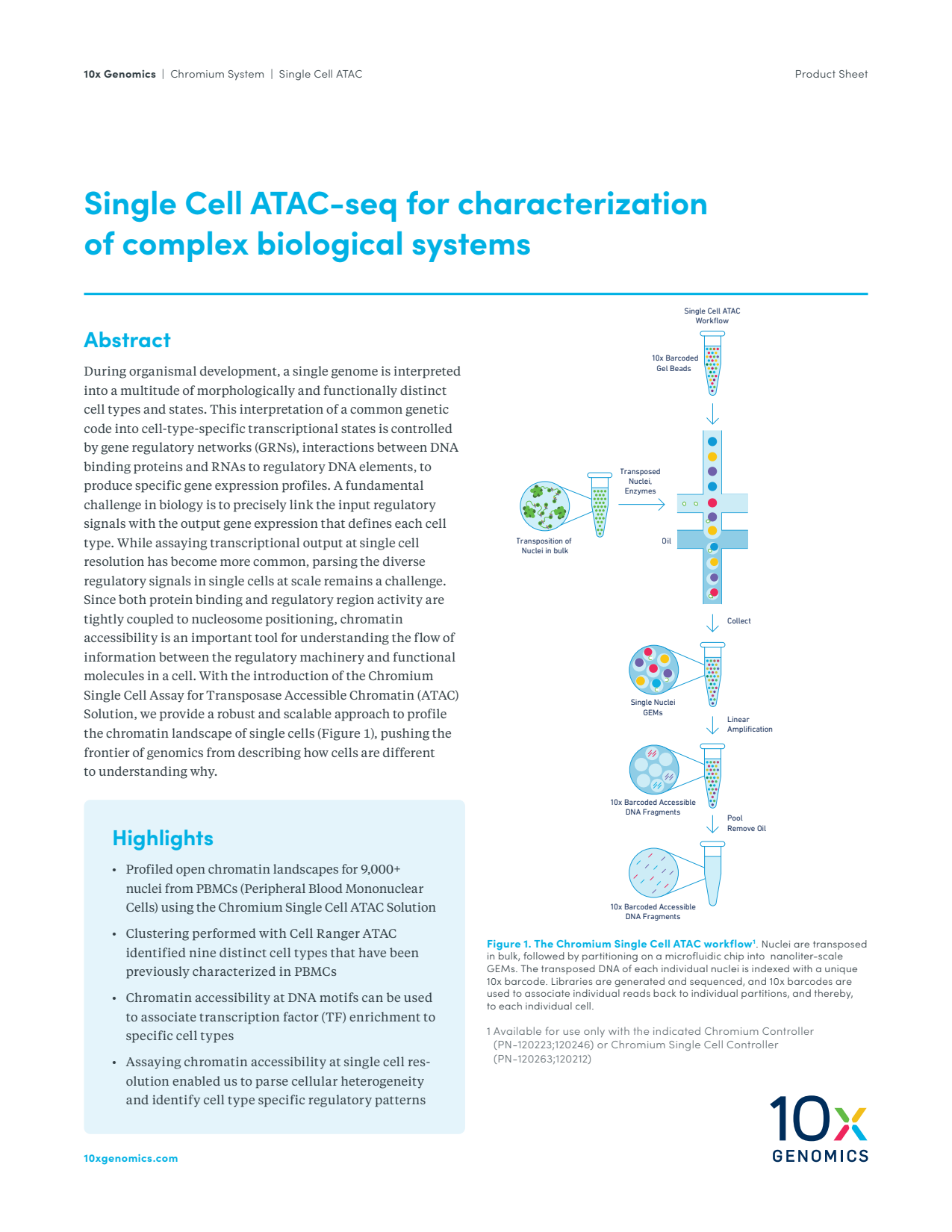
Single Cell ATAC-Seq for Characterization of Complex Biological Systems
During organismal development, a single genome is interpreted into a multitude of morphologically and functionally distinct cell types and states. This interpretation of a common genetic code into cell-type-specific transcriptional states is controlled by gene regulatory networks (GRNs), interactions between DNA-binding proteins and RNAs to regulatory DNA elements, to produce specific gene expression profiles. A fundamental challenge in biology is to precisely link the input regulatory signals with the output gene expression that defines each cell type.
During organismal development, a single genome is interpreted into a multitude of morphologically and functionally distinct cell types and states. This interpretation of a common genetic code into cell-type-specific transcriptional states is controlled by gene regulatory networks (GRNs), interactions between DNA-binding proteins and RNAs to regulatory DNA elements, to produce specific gene expression profiles. A fundamental challenge in biology is to precisely link the input regulatory signals with the output gene expression that defines each cell type.